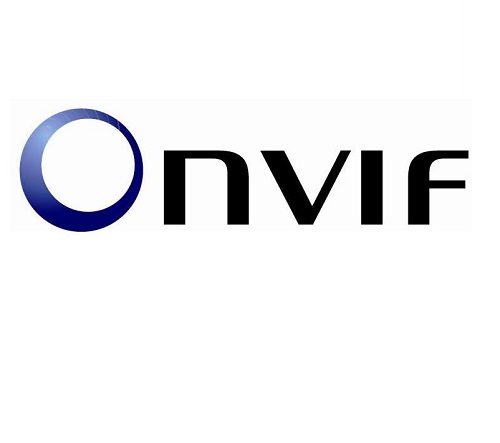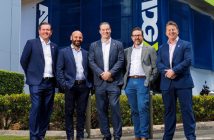
Per Björkdahl, Chair of ONVIF’s Steering Committee, explains how the recently released ONVIF Profile Q helps simplify the entire interoperability process.
Tell our readers about Profile Q.
 ONVIF offers a conformance process, and also asks member companies to provide something called an Interface Guide. This was originally established based on feedback from integrators who said that ONVIF products didnʼt always work together out of the box. Profile Q basically addresses the technical part of this interface guide. What we achieve with Profile Q is out-of-the-box interoperability.
ONVIF offers a conformance process, and also asks member companies to provide something called an Interface Guide. This was originally established based on feedback from integrators who said that ONVIF products didnʼt always work together out of the box. Profile Q basically addresses the technical part of this interface guide. What we achieve with Profile Q is out-of-the-box interoperability.
Was the Profile developed in response to the demands of the industry?
It was. ONVIF issues periodic surveys asking manufacturers, integrators and groups of users for their feedback. Out-of-the-box interoperability was something that was requested from those who responded to our surveys. There was a very high demand for that, along with the need for the Interface Guides, which led to Profile Q being developed.
When you take a Profile Q product out of the box and hook it up to the network, it will work with other ONVIF Profile Q-conformant products.
Who is Profile Q’s user? Will Profile Q help add new members to ONVIF?
Profile Q is really targeted at the companies already using ONVIF devices. If you build a new airport terminal, for example, you can use ONVIF Profile S compliant devices much more easily than any other because you can buy the cameras from vendor A, and the other components from vendor B. Profile Q makes the installation process and configuration of these devices much easier. Profile Q provides benefits for integrators and end users, in many ways.
Does this signal a slight shift in the focus of ONVIF, towards the end user?
The ONVIF standard has always been designed to make life easier for the people who use the products. Attracting more companies to work with ONVIF has happened naturally because the ONVIF specifications have struck a chord with end users, who have started demanding interoperability when specifying a new security system. They have recognized that it is definitely needed within the industry for standardization.
How strong is the need for standardization and how has ONVIF helped address this need?
We wouldnʼt be here today if there wasnʼt a need for it. Interoperability and standards are very basic needs within the industry and ONVIF as an organization has created a lot of momentum and shaken up the conservative surveillance industry quite a bit.
ONVIF Profiles and standardization give developers more time and space to work on very new features because they don’t have to spend time on interoperability for each and every product. Before, without standardization, it took years for interoperable products to be developed by different manufacturers. They would all say ʻyes, you can have interoperability, but only if you buy the entire system from me.ʼ Now, thanks to ONVIF, the industry is a lot more open.
What other advantages has ONVIF brought to the industry?
On top of answering the need for interoperability, ONVIF has helped generate consensus among manufacturers. Previously, manufacturers tended to keep ideas to themselves in order to gain a business advantage over competitors. ONVIF is a member-based organization that operates using committees, which means engineers and developers from different companies work together on developing ONVIF Profiles. I think this has fostered more of a collaborative spirit between the manufacturers who are members – there is a better recognition that good standards can benefit everyone.
Some areas are still very proprietary, however, such as video analytics, for example. But ONVIF is starting to even open video analytics up a bit. You can now use algorithms developed from outside of a camera manufacturer in your camera now. If we continue working on interoperability together, areas that were previously kept proprietary will become more accessible and open. In the end, customers will get more choices.
How do you see ONVIF adapting and changing in the future? Will it be more industry-led or end-user led?
The members of ONVIF are also the technology innovators, so the technology itself within the industry is always getting more and more sophisticated. I think that the Profile approach that ONVIF has taken is quite a clever one. Changing the specifications of a product can be a laborious process, but changing a Profile slightly can happen quite quickly. If the industry needs change, or there is a new type of product that needs covering, you can develop a Profile to cover it, while using the underlying ONVIF technology to do so. The profile approach allows ONVIF to react very quickly and means that ONVIF can adapt as needs and technology change.
Ultimately, ONVIF is driven by end users and giving them the freedom to choose products that best suit their needs. But as I said, ONVIF also frees up human resources for manufacturers. I think there is always a symbiotic relationship between the two and that the needs of one often relate to or reflect those of the other.
Is ONVIF a great way for the industry to collaborate and work together to find solutions?
Absolutely, yes. I think it will lead to standardization becoming increasingly important in the security industry. As government organizations around the world have less and less money to spend, interoperability between different vendors can only be a good thing. Everything needs to be standardized to become part of government initiatives, for example. The recent recognition from the International Electrotechnical Commission (IEC) is great for ONVIF. Governmental organizations can only have internationally recognized standards in use, which is a great step forward for ONVIF.
Iʼm very excited to see how ONVIF continues in the future, and I really hope that many more companies pick up Profile Q and use it in their devices, as it will help simplify the entire interoperability process.





